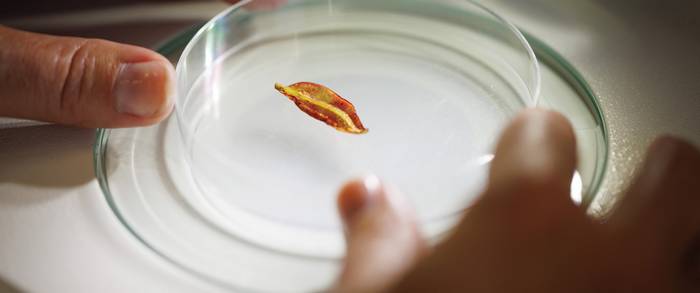Friend or foe

The scientific discovery of a midge that feeds on myrtle rust spores has Scion scientists researching whether it is a friend or foe in the fight against myrtle rust.
Midge larvae feeding on myrtle rust spores were first observed during disease assessments near Rotorua in 2018 by Scion researcher Roanne Sutherland. The tiny larvae proved to belong to an undescribed species of a rust- and mildew-feeding genus of fly and has only been formally described in partnership with Australian insect taxonomist Dr Peter Kolesik, in 2022.
Scion entomologist Dr Toni Withers says the midge is new to science and is a very exciting and important discovery for the team undertaking myrtle rust research.
“In New Zealand, midges are largely understudied, therefore a lack of knowledge exists about these tiny native flies. It is important to explore the relationship between the larvae and the plant host. Myrtle rust is having detrimental impacts on ecosystems and economies worldwide, including here in New Zealand on our Myrtaceae species.”
The next stage of the research turns to determining how many rust species this larva eats and whether the midge could become a natural enemy of myrtle rust, or a vector spreading the spores.

Myrtle rust (Austropuccinia psidii) is a serious threat to New Zealand Myrtaceae including ramarama, rōhutu, maire tawake and pōhutukawa. The fungal disease was first reported in May 2017 and is now widespread, established and causing significant damage.
Both chemical and biological control options are relevant to help manage myrtle rust now that it is considered an established pathogen in New Zealand. Scion’s work in this area has included testing chemicals in containment facilities, as well as investigating biological control options.
